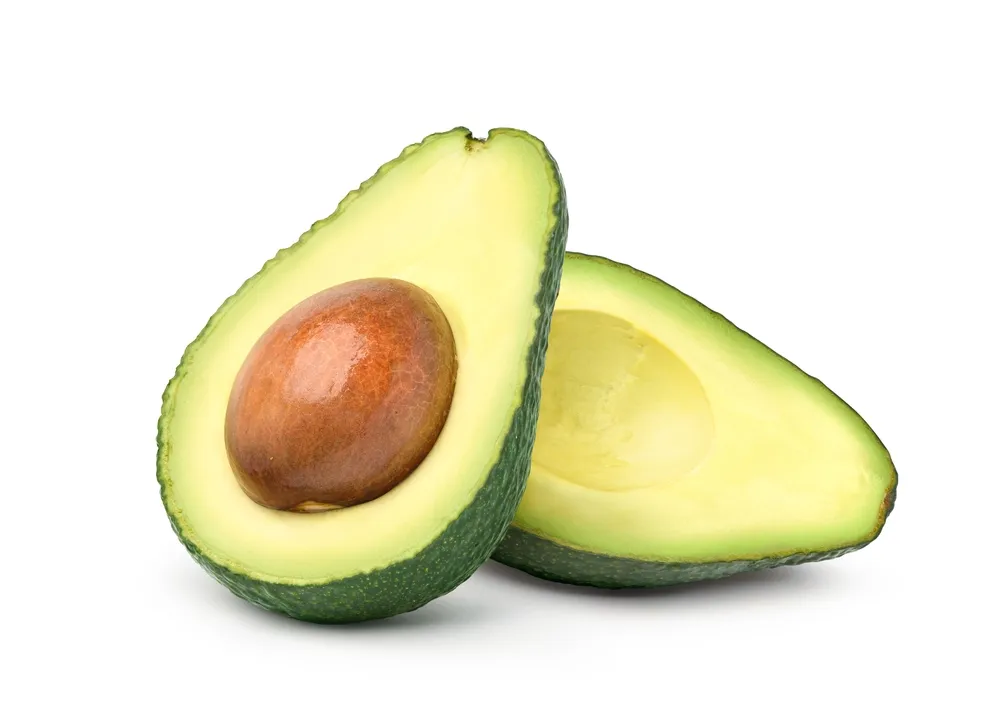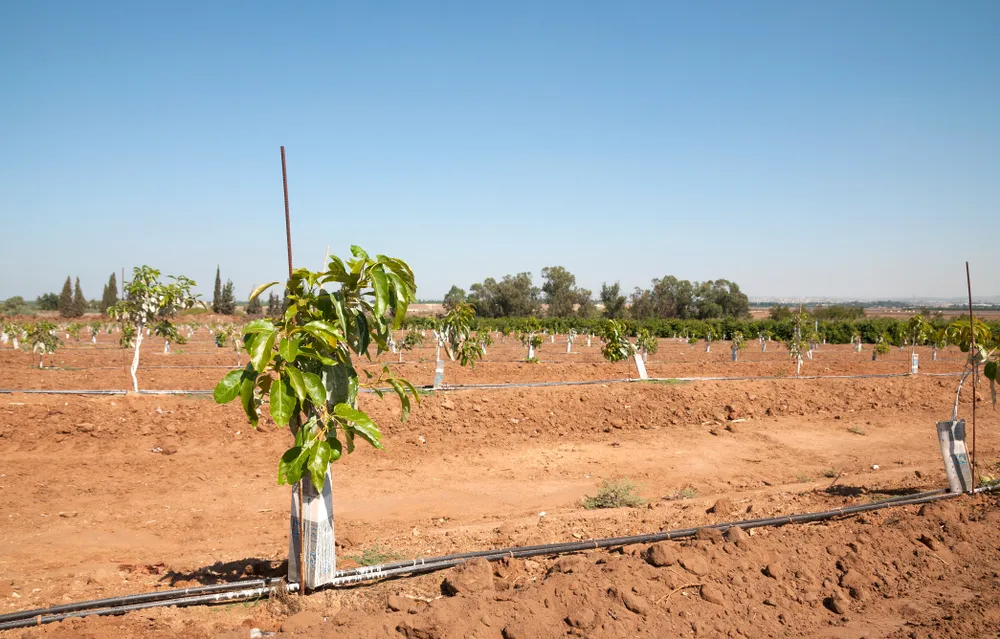 Back
Back

Avocado , also known as butter fruit, is gaining popularity in India for its health benefits, including healthy fats and fiber. It is mainly grown in Kerala, Tamil Nadu, Karnataka, and hilly regions like Coorg and the Nilgiris. There is significant potential for avocado cultivation in India, necessitating efforts to develop suitable varieties and production technologies.
Avocado verity:-
Avocado verity:-
There are three main types of avocados
1 Mexican avocados:
• Small fruits, weighing about 250 grams.
• Take 6 to 8 months to mature after flowering.
• Have a smooth, thin peel and a large seed that’s loosely attached to the pulp.
• Contain about 30% oil.
2 Guatemalan avocados:
• Large fruits, weighing around 600 grams.
• Take 9 to 12 months to mature after flowering.
• Have a thick peel and a small seed that’s tightly attached to the pulp.
• Contain 10% to 15% oil.
3 West Indian avocados:
• Medium-sized fruits, weighing about 350 grams.
• Take about 9 months to mature after flowering.
• Have a smooth and glossy peel with a large seed that’s loosely attached to the pulp.
• Contain 4% to 8% oil.
Hybrids of Guatemalan and Mexican avocados are common in milder tropical and subtropical regions because they combine the cold resistance of Mexican avocados with the good qualities of both types. West Indian avocados are best for warm tropical areas.
Some popular avocado varieties grown in India include Hass, Fuerte, Green, TKD1, and Arka Supreme.






Soil and climate
Soil and climate
Avocados thrive in well-drained soils rich in organic matter, with a pH of 5 to 7. They prefer moderately warm temperatures (20-30°C) with high humidity and are sensitive to poor drainage, salinity, waterlogging, hot dry winds, and frosts. Depending on the variety, avocados can grow in tropical to warm temperate climates.




Plant preparation
Plant preparation
In India, avocados are often grown from seeds, with seedlings used for transplanting after 8-12 months. However, seedling trees take longer to fruit and have variable yields. Nowadays, grafting is preferred for propagating desired varieties, using rootstocks grown from seeds or by layering. After about a year in a greenhouse, rootstocks are grafted using terminal or lateral grafting, with softwood grafting being the most popular method. The grafted plants are grown for another 6-12 months before planting.




Sowing & Spacing
Sowing & Spacing
In South India avocados are planted in rows spaced at 6 to 7 meters with a plant-to-plant distance of 3 to 3.6 meters within the row accommodating 160 to 220 plants per acre. A planting distance of 10 x 10 meters is recommended on hills slopes of north Indian states.




Nutrient management
Nutrient management
Avocados require heavy manuring and integrated nutrient management with both inorganic and organic fertilizers. Generally, each tree needs 40-60 kg of farmyard manure, 500-800 g of nitrogen, 150-250 g of phosphorus, and 300-400 g of potash annually. Micronutrients are also beneficial. In South India’s humid tropical regions, fertilizers are applied in May-June and September-October, while in Northern India, they are applied in March-April and September-October or around the monsoon season. Fertilizers should be placed away from the trunk, adjusted for tree age and canopy spread, and covered with soil. Immediate irrigation is required if there’s no rain.




Training and pruning
Training and pruning
Avocado plants need light pruning early on to develop, an open center canopy; pruning is rarely needed afterward. For upright varieties like Pollock, topping reduces tree size, while spreading varieties require thinning and shortening of branches. Drooping and ground-touching branches should be pruned for easier maintenance.




Irrigation
Irrigation
In India, avocado is grown in areas where rainfall is high and fairly distributed throughout the year with good ambient humidity. Therefore, it is grown under rain fed conditions and irrigation is generally not given. Irrigation at interval of two to three weeks during the dry summer months is beneficial. To avoid moisture stress during winter season, mulching with dry grass/dry leaves is desirable. Drip irrigation is a better option as flooding is likely to promote root rot incidence.




Intercultural and weed management.
Intercultural and weed management.
Light intercultivation or stirring the basin soil is good enough for weed management. Intercropping with legumes or shallow-rooted crops can be done in young orchards which can smoother weeds. If the weeds are major problems in high rainfall regions suitable herbicide application can also be adopted.




Flowering, pollination and fruiting :-
Flowering, pollination and fruiting :-
Avocados have a problem with fruiting due to digamy, where the male and female parts mature at different times, preventing self-pollination. The time of maturity of male and female flowers is different in different varieties. Female flowers mature before male flowers, eliminating the possibility of cross-pollination within the same tree. Therefore, two varieties that mature at different times should be planted together.
Special:- Avocado has two types of flowers: A and B. Type A flowers open as female in the morning and as male the next afternoon. Type B flowers open as female in the afternoon and as male the next morning.
• A varieties: Hass, Gwen, Lamb Hass, Pinkerton, Reed.
• B varieties: Fuerte, Sharvil, Zutano, Bacon, Ettinger, Sir Prize, Walter Hole.




Pests and diseases
Pests and diseases
Take up recommended plant protection measures to manage economically important pets and diseases. Anthracnose, Phytophthora root rot, leaf spot, stem rot and scab are the major diseases affecting avocado. Insect pests Mites, mealy bugs, scales are the important insect pests of avocado.
To manage this issue use recommended doses you can also visit nearest Government Agri center.
Harvesting
Harvesting
Avocado trees grown from seeds start bearing fruit in 5-6 years, while grafted plants yield in 3-4 years. Mature fruits of purple varieties turn from purple to maroon, and green varieties become greenish-yellow. As fruits mature, their peel becomes smoother and less glossy. They are ready for harvest when the seed coat inside turns from yellowish-white to dark brown. Fruits ripen 6-10 days after harvesting and are picked from June to October. They remain hard on the tree, softening only after harvest. Each tree yields about 100 to 500 fruits.
Post-harvest handling, storage and marketing
Post-harvest handling, storage and marketing
Avocados are packed in well-ventilated corrugated boxes and stored at relative humidity 90 % to 95 % and temperature 12-13 degree Celsius. Weight loss and shriveling are higher at low RH. Based on size and appearance grading and sorting is done before selling the fruits. Grading can be done based on size as small weighing about 250 g, medium weighing about 500 g and large weighing about 1000 g for export market. In domestic markets of India, fruits of 250 to 300 grams in size are preferred. Hard, mature fruits are harvested and allowed to ripen during transport and distribution.




Thank you for reading this article, we hope you clicked on the ♡ icon to like the article and also do share it with your friends and family now!








